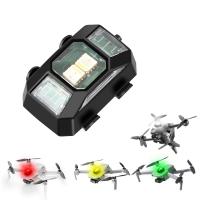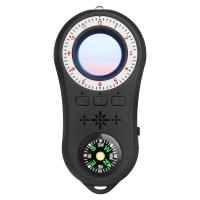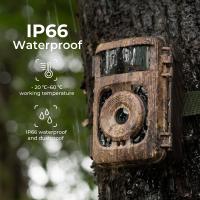How To Find The Uv Filter Size?
How to Find the UV Filter Size for Your Camera Lens

When you start building your photography gear, choosing the right UV filter is an important step. While UV filters aren't as essential as they once were for film cameras (due to digital sensors eliminating much of the UV light problem), they still serve several important purposes. Whether you're aiming to protect your lens, reduce haze, or simply add an extra layer of protection to your expensive glass, knowing how to find the right UV filter size is crucial.
In this article, we’ll break down the steps for determining the correct UV filter size for your camera lens, along with tips on choosing the best UV filter for your needs. Let’s dive in!
---
1. What is a UV Filter and Why Use One?
A UV filter is a clear lens filter that blocks ultraviolet (UV) light from reaching your camera's sensor. Originally, UV filters were used to prevent UV light from causing hazy or blurry photos, particularly in outdoor environments with high altitudes and bright sunlight.
However, with modern digital cameras, UV light is no longer a significant issue, as most sensors and lenses are already designed to handle it. Despite this, UV filters continue to serve other valuable purposes:
- Lens Protection: A UV filter can act as a protective shield for your lens. It can absorb any physical impact, such as dust, sand, or scratches, instead of your lens element.
- Clearer Shots in Hazy Conditions: In some situations, such as landscape photography at high altitudes or near bodies of water, UV filters can still help reduce haziness and provide sharper, more detailed images.
- Lens Care: A UV filter helps keep your lens clean. If your lens gets dusty or dirty, you can clean the filter instead of the lens itself.
Although UV filters don’t contribute to image quality in digital photography as much as they did in the past, they’re still a good accessory for protection.
---
2. How to Determine the Correct UV Filter Size
The first and most important thing to know when purchasing a UV filter is the filter size. This ensures that the filter will fit your lens properly. Here's how to determine the correct size:
Step 1: Check the Lens Thread Size
The size of the UV filter corresponds to the diameter of the front thread of your lens. To find out the correct filter size, you'll need to check the thread size of your lens. This is usually indicated on the lens itself, often printed in tiny text on the front or near the lens mount.
- Look for the Diameter Information: The size is typically indicated with a "Ø" symbol followed by a number in millimeters (mm). For example, if you see "Ø58mm," that means the lens has a 58mm diameter thread, and you will need a 58mm UV filter.
- Where to Find the Information: The diameter marking is usually found on the front ring of the lens, just near the glass element. If you're unsure, refer to the lens manual or check the manufacturer's website.
Step 2: Use a Measuring Tool (If Uncertain)
If you're unable to locate the size printed on the lens, you can measure the diameter manually. You’ll need a caliper or a ruler with millimeter markings. To do this:
1. Measure the outer diameter of the lens’s filter thread.
2. Ensure you're measuring the actual thread (the screw-on part), not the lens barrel or the glass itself.
This method isn’t as precise as the manufacturer’s specifications but can work in a pinch if you don't have the original packaging or manual.
Step 3: Confirm the Size with a Lens Size Chart
If you’re still unsure about the right size, some websites offer lens size charts where you can match your lens model to its corresponding filter size. These charts can be particularly helpful when you're shopping for filters online.
---
3. What Happens If You Choose the Wrong Filter Size?
Choosing the wrong filter size can lead to several problems:
- Filter Doesn’t Fit: If the filter is too small, it won’t fit the lens thread, and you’ll be unable to use it at all. If the filter is too large, it won’t screw on securely and may cause vignetting (a darkening effect in the corners of your photos).
- Vignetting: Using a larger filter on a lens that’s designed for a smaller size can lead to "vignetting," where the corners of your photo appear dark or shaded. This happens because the filter is physically blocking the view of the camera lens, especially when shooting wide at low focal lengths.
To avoid this, always double-check the filter size for your lens before purchasing.
---
4. Different Lens Filter Sizes and Compatibility
It's important to note that different lenses may require different filter sizes. For example:
- Wide-Angle Lenses: These lenses often require smaller diameter filters (such as 52mm or 58mm).
- Telephoto Lenses: These lenses may have larger diameters (e.g., 77mm or 82mm).
The size of the lens thread increases with the size of the lens. If you own multiple lenses with varying filter sizes, you can consider purchasing a step-up ring or step-down ring.
- Step-Up Ring: Allows you to use a larger filter on a lens with a smaller filter thread.
- Step-Down Ring: Lets you use a smaller filter on a lens with a larger thread size.
These rings are relatively inexpensive and can save you from purchasing multiple UV filters for different lenses.
---
5. Choosing the Right UV Filter
Once you've determined the right size for your UV filter, the next step is choosing the best UV filter for your lens. Here are some factors to consider:
Filter Material
UV filters are typically made from optical glass or optical resin. Optical glass filters are generally superior in terms of optical quality, providing better clarity and minimal distortion. Resin filters are more affordable but may suffer from slight image degradation.
Coating
Some UV filters come with special coatings to enhance image quality:
- Multi-Coating: Helps reduce reflections, glare, and lens flares. It’s especially useful when shooting in bright conditions.
- Hydrophobic or Water-Repellent Coatings: These coatings help repel water, making the filter easier to clean in wet conditions.
Brand Reputation
Popular brands such as B+W, Hoya, Tiffen, and Marumi offer a wide range of UV filters with varying levels of quality and pricing. When in doubt, choosing a reputable brand can ensure better performance and durability.
---
6. UV Filter Alternatives
While UV filters remain popular for lens protection, there are alternatives depending on your specific needs:
- Clear Filters: These are essentially UV filters with no UV blocking, often used purely for protection.
- Polarizing Filters: If you're looking to reduce glare or increase contrast in your outdoor shots, a polarizing filter may be a better option than a UV filter.
- ND Filters: If your goal is to reduce the amount of light entering the lens to enable long exposure photography, a neutral density (ND) filter would be more appropriate than a UV filter.
---
Finding the right UV filter size is a simple but crucial part of maintaining and enhancing your camera lens. By checking the lens size marking, using measuring tools, and confirming the diameter, you can easily select the proper filter for your lens. Additionally, investing in a quality UV filter can protect your expensive glass from the elements and scratches, all while offering minor enhancements in specific shooting conditions.
Remember, while UV filters are no longer as essential as they once were in the film era, they remain an affordable and practical tool for many photographers. Whether for lens protection, haze reduction, or simply peace of mind, understanding how to choose the correct UV filter size will make sure your gear stays in top shape for years to come.




































There are no comments for this blog.